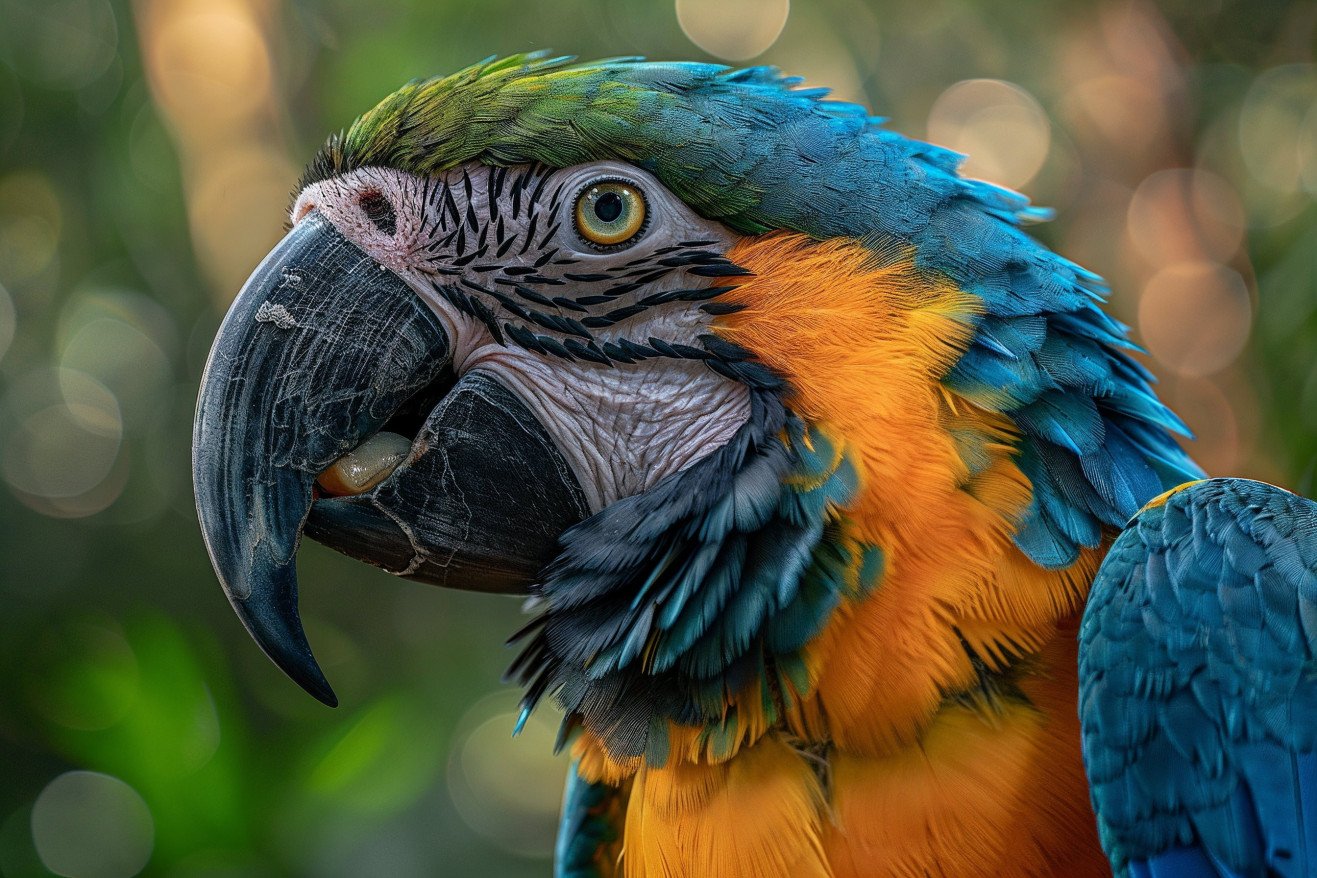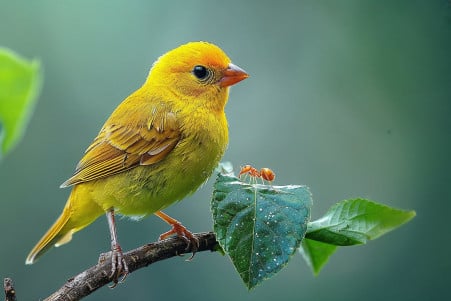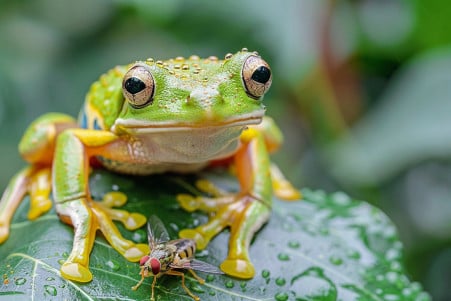Do Birds Eat Meat? A Look at the Many Different Bird Diets
27 March 2024 • Updated 27 March 2024

The question of whether birds eat meat is a complex one that depends on the specific species in question. Bird diets are incredibly diverse, with some birds eating primarily seeds, fruit, and other plant-based foods (herbivores) and others eating mostly insects, worms, and other small animals (carnivores). That said, many birds are omnivores, meaning they eat a mix of animal and plant-based foods to get the nutrients they need.
In this article, we'll look at research and observations to understand the many ways that birds can be omnivores. By looking at the anatomical, behavioral, and ecological factors that influence bird diets, we'll learn about the amazing diversity of birds. Not only will this help us understand the evolutionary roots of omnivory, but it will also help us appreciate the important role birds play in the ecosystems they inhabit.
Are birds omnivores?
Seasonal Adaptations: Omnivorous Birds’ Dietary Flexibility
Omnivorous birds demonstrate impressive adaptations that enable them to change their diets as the availability of food changes throughout the year. As the U.S. National Park Service explains, birds like crows, ravens, and jays have beaks of intermediate length and straightness that are highly adaptable and allow them to eat everything from plants to small animals. This beak adaptation is an important factor in enabling omnivorous birds to change their diets from season to season.
A study published in PMC showed that the omnivorous Zonotrichia capensis lowered its trophic level (as indicated by a decrease in nitrogen-15) in the winter, which suggests that the bird relied more on plants when animal prey was less available. On the other hand, the bird’s isotopic niche width was narrower in the winter, which means its diet was less varied. This ability to change niche width and trophic position allows omnivorous birds to eat the most available food in any given season.
The Central Himalayas research found that while the richness of omnivorous bird species changed only slightly from season to season, their distribution was impacted by both elevation and season. This shows how omnivorous birds can adjust their diet to the environment. The American Robin is an example of this, as it changes from eating mostly invertebrates in the summer to eating a diet rich in fruits and berries in the winter. These changes help ensure that the birds get the nutrients they need to survive and reproduce.
Nutrient Balance: Omnivory and the Importance of a Varied Diet
Birds have a wide range of nutritional needs that can be met through an omnivorous diet. As the Diet and Nutrition resource explains, many species of birds that are primarily herbivorous or carnivorous will switch to a more omnivorous diet during the breeding season to ensure they and their offspring get the protein and other nutrients they need.
The British Ornithologists' Union also discovered that for some omnivorous birds, including the Village Weaver, insects are a more nutritious food source than fruits, which means a balanced diet of grains and animal matter is important to meet their daily nutritional needs, especially when they have high energy requirements, such as during the breeding season and when they are growing.
In addition, a study in Functional Ecology showed that frugivorous birds are able to regulate their macronutrient intake so that they get a balanced diet rather than just consuming the most energy-rich foods. This shows that it's important for omnivorous birds to get a range of nutrients from both plant and animal sources to ensure they are as healthy and fit as possible.
By eating insects, small vertebrates, and a variety of plant foods, omnivorous birds can ensure they get the nutrients they need to thrive throughout the year. This adaptability enables them to live in a wide range of habitats and fulfill important niches in their ecosystems.
Evolutionary Perspectives: The Costs and Benefits of Omnivory
The evolutionary forces that have driven the evolution of omnivory in birds are multifaceted and involve trade-offs with specialized diets. As noted in a study in PMC, omnivores account for 12% of bird species and are "largely spread randomly across the bird phylogeny, unlike other dietary guilds which are more phylogenetically clustered." This indicates that omnivory may be a "macroevolutionary sink" whose transitory nature is maintained by transitions from other guilds rather than omnivore speciation.
As described in the IPL.org article, omnivorous birds are in competition with insectivores and frugivores since they share a diet with both groups. However, even though omnivores have a wider range of food options, resources are generally stable and continuously available, so the generalist omnivores are outcompeted by the specialists who are better at exploiting those resources. This leads to a low diversity of generalist omnivorous species and higher extinction rates for omnivores.
On the other hand, the Study.com lesson points out that omnivores can gain energy from a variety of plant and animal sources, which gives them the ability to adapt to different environmental conditions. This adaptability could be important in the face of ecological factors and resource availability that can lead to the evolution of omnivory or transitions to and from omnivory in different bird lineages.
Human Impacts: Threats and Conservation Strategies
Human impacts, especially habitat loss, urbanization, and recreational activities, are some of the greatest threats to omnivorous bird communities. A study published in PMC showed that increased human subsistence activities in forested areas can lead to changes in vegetation structure that benefit certain omnivorous birds, such as nectarivores and aerial insectivores, while harming forest specialists. The Ecosphere study also demonstrated that human recreation can lead to changes in mammal activity patterns or reduced mammal occupancy, which may have similar impacts on sensitive omnivorous birds.
The Behavioral Ecology study of the endangered little bustard showed that human activities, especially hunting, can have a major impact on the behavior and physiology of omnivorous birds. The study showed that hunting led to increased vigilance, reduced foraging, and increased stress hormone levels, all of which may have long-term consequences for the wintering populations of this bird.
Conservation efforts are needed to protect omnivorous birds from the impacts of human activities. As the ScienceDirect research pointed out, maintaining ecosystems with a variety of food resources is key to the long-term survival of these birds. Specific management actions, including habitat restoration, controlling recreational activities, and reducing hunting, can help ensure that the complex communities of omnivorous birds continue to thrive.
While human-altered landscapes can support a range of omnivorous birds, it’s important that conservation efforts also focus on protecting natural habitats to ensure that specialist species continue to exist. By taking a comprehensive approach to the many threats posed by human activities, we can move toward a future where the amazing adaptations and ecological roles of omnivorous birds are appreciated and conserved.
Conclusion: Celebrating the Diversity of Avian Diets
The remarkable diversity of avian diets, with many species exhibiting omnivorous behavior, is a testament to the adaptability and resilience of our feathered friends. By understanding the seasonal adjustments, nutritional balancing acts, and evolutionary perspectives surrounding omnivory, we gain a deeper appreciation for the complex and fascinating world of bird feeding habits.
As we move forward, ongoing research and conservation are needed to protect omnivorous birds from the many threats posed by human activities. By celebrating the diversity of avian diets and the important ecological roles these birds play, we can help ensure a future where the balance of our ecosystems is preserved, and the beauty of our avian friends is appreciated for generations to come.


